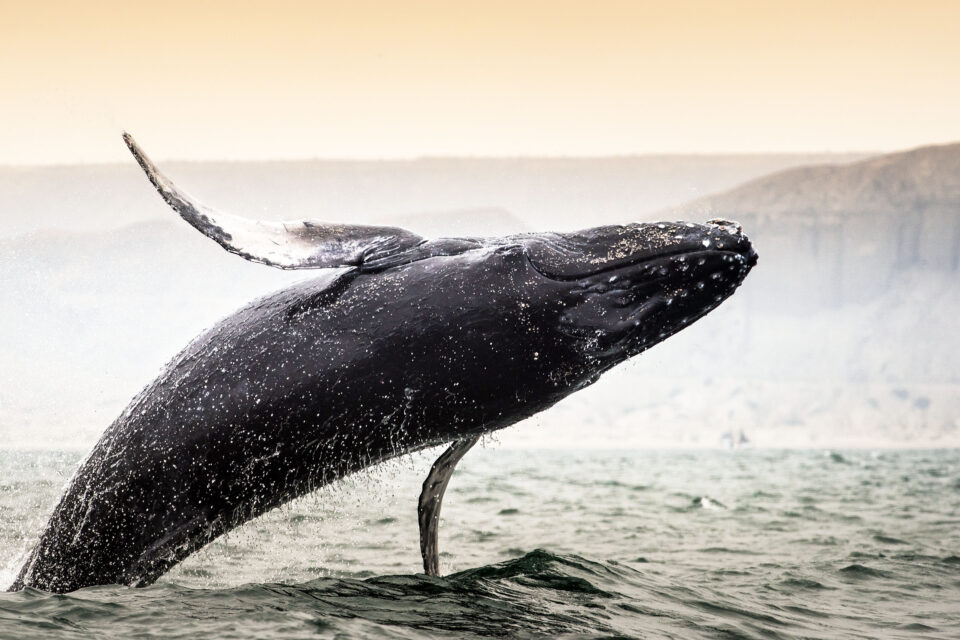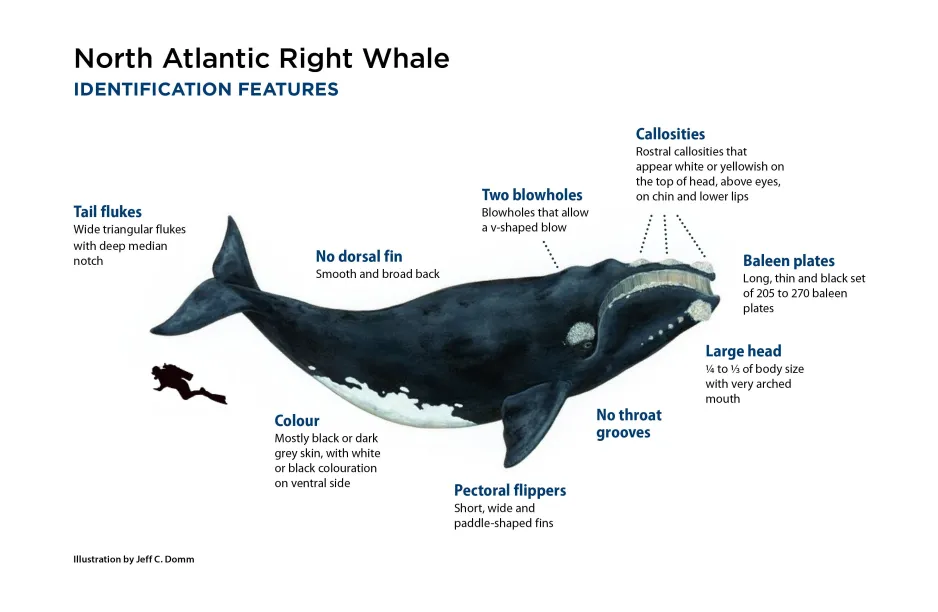Description

Copyright infringement not intended
Picture Courtesy: https://www.earth.com/image/north-atlantic-right-whale-eubalaena-glacialis/
Context: A new study revealed that even minor tangles in fishing gear can significantly reduce a female North Atlantic right whale's chance of ever reproducing.
About North Atlantic Right Whale
- The North Atlantic right whale inhabits the cold waters of the North Atlantic Ocean. These gentle giants face a constant struggle for survival, making them a critical conservation concern.
Habitat and Living Situation
- North Atlantic right whales are migratory, following a seasonal pattern between feeding and calving grounds. In summer, they travel to cooler waters near Canada and the northeastern US to feed on plankton-rich areas. In winter, they migrate south to warmer waters off the coasts of Florida and Georgia for breeding and calving.
- Unlike many other whale species, right whales prefer shallow coastal waters, making them more susceptible to threats like ship strikes and entanglement in fishing gear.
Unique Traits That Set Them Apart
- One of the most distinctive features of right whales are the callosities - rough, raised patches of skin on their heads. These callosities are unique to each individual, like fingerprints, and are used for identification by researchers.
- Compared to other whales, right whales are slow swimmers, averaging around 5-7 kilometres per hour. This slow speed makes them more vulnerable to collisions with ships.
- Unlike most whales, North Atlantic right whales lack a dorsal fin, making them even easier to distinguish from other species.

A Vital Role in the Marine Ecosystem
- Right whales feed by filtering massive quantities of plankton from the water using their baleen plates. This feeding process helps to cycle nutrients in the ocean, promoting healthy phytoplankton growth, which forms the base of the marine food web.
Threats to Their Survival
- A major threat to right whales is entanglement in fishing gear, particularly lobster trap lines. These ropes can become wrapped around their bodies, flippers, or tails, causing severe injuries, infections, and even death.
- Collisions with ships pose another significant threat. Due to their slow swimming speed and preference for shallow waters, right whales are more susceptible to being struck by vessels.
- Changes in ocean temperatures and currents due to climate change are impacting plankton distribution, potentially affecting right whale food sources and migration patterns.
Protection Status
- The IUCN Red List classifies the North Atlantic right whale as "critically endangered," with an estimated population of fewer than 360 individuals remaining.
- Several international agreements and national laws offer some protection for right whales. These include regulations on fishing gear and designated shipping lanes to minimise the risk of collisions.

|
PRACTICE QUESTION
Q. What is the IUCN Red List status of the North Atlantic right whale?
A) Least Concern
B) Vulnerable
C) Endangered
D) Critically Endangered
Answer: D
|













